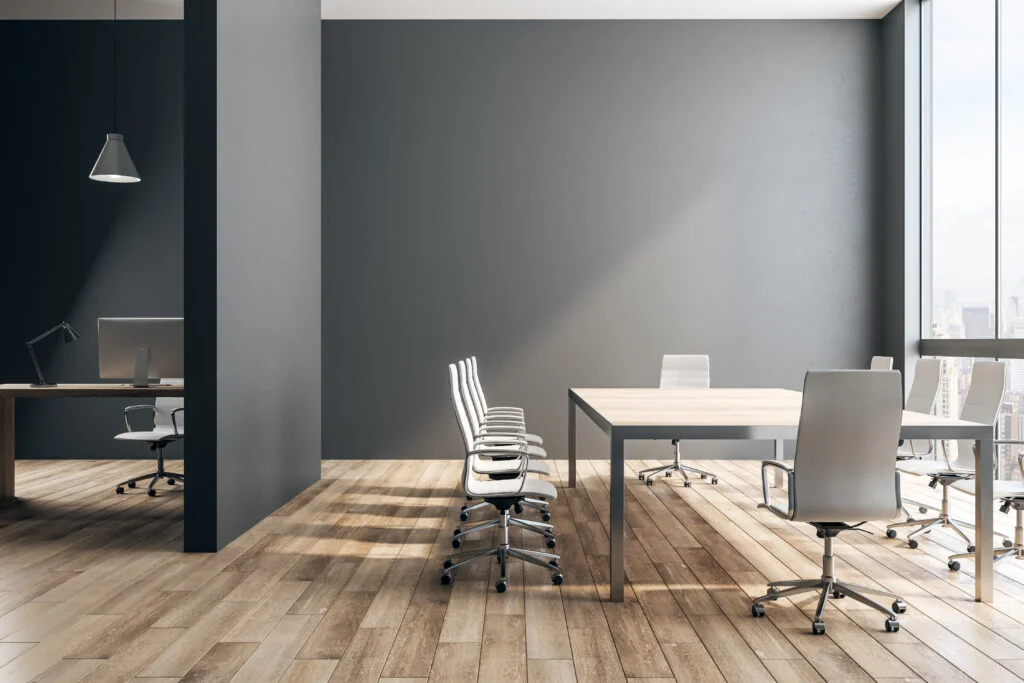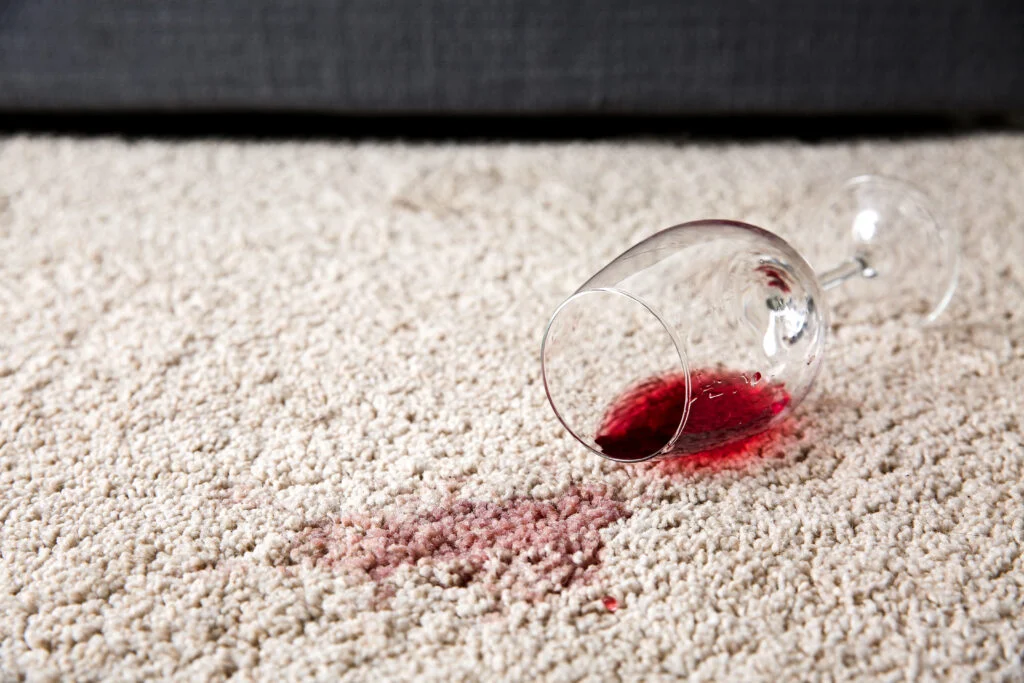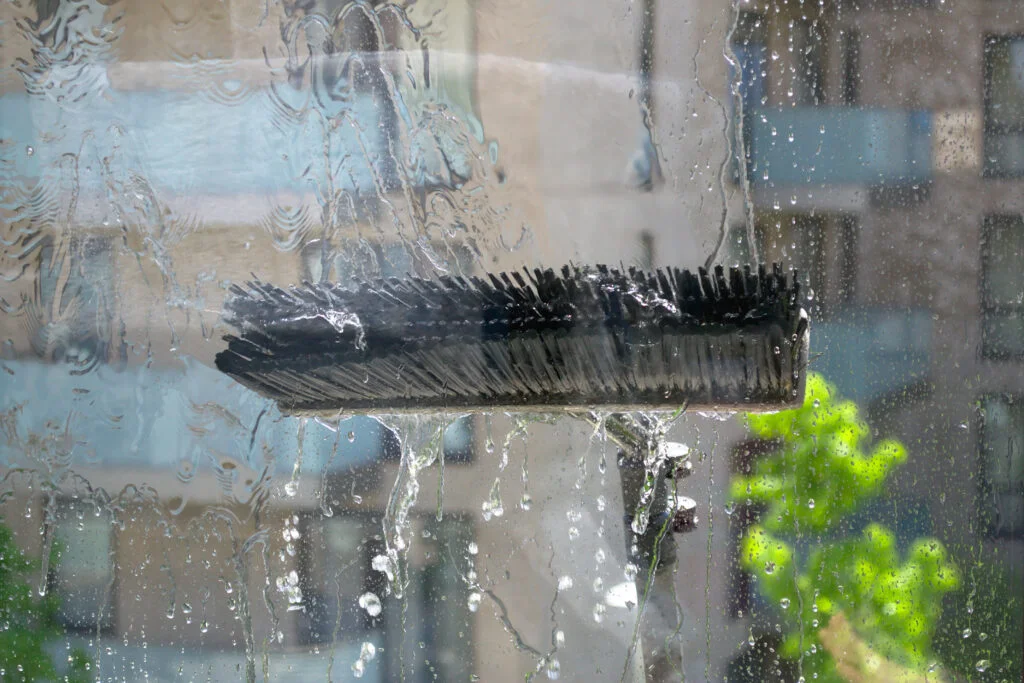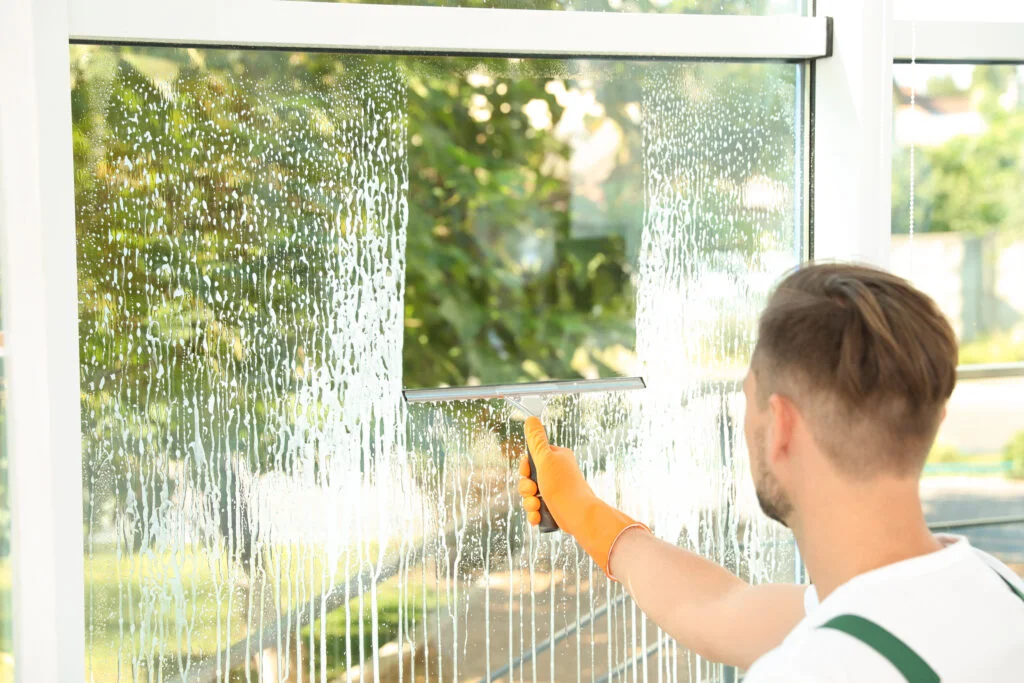When it comes to floor cleaning, a good (microfibre) cloth or mop and clean water is all you need in most cases. Usually these things will get the job done. If really necessary, you can add a little bit of floor-cleaning solution. In most cases, however, it is not necessary to add any detergent as the mop is enough to get the job done.
Varnished parquet
Varnished parquet should be cleaned with a damp mop. Where possible, dampen the mop by using a spray bottle. If you do not have a spray bottle, wet the mop under running tap water and wring it out as much as possible. Now you are ready to start cleaning!
Of all the hardwood floors, varnished parquet is the least sensitive. Should you spill any coffee or red wine on the floor, just wipe it off with a cloth or paper towel – there will be no stains.
Oiled hardwood
Oiled hardwood floors are more sensitive than varnished hardwood floors. The regular maintenance of oiled hardwood is similar to that of varnished parquet, but spilled liquids need to be cleaned fast. The longer the spill is on the floor, the deeper ingrained in the floor it becomes. In the case of staining, the only solution may be deep cleaning or sanding.
Remember! If you are dealing with a sticky stain, do not scrub it with an abrasive sponge. This can damage the floor surface and leave light spots on the floor.
Wood floor
Unfinished wood floors are more sensitive to staining than wood floors that have been finished with oil. If spilled, red wine and Coca-Cola can seep into the floor in a matter of seconds.
A damp mop is also used for the daily maintenance of wood floors.
Sisal flooring
Tightly woven sisal carpets are a real challenge for cleaning staff because they are very difficult to maintain. A vacuum cleaner can be used to remove any sand or crumbs, but wet-cleaning is more difficult. Although the material is not moisture sensitive, it is difficult to get into all the nooks and crannies of the fibres with a mop. The situation is especially bad when a piece of cake or something else sticky falls onto the carpet. In such a situation, the only solution is to flood the floor with water and suck the liquid back up into a recovery tank using a special machine. Note! Cleaning companies consider this to be a specialist job.
Coir carpeting
Coir carpeting is beautiful, natural, and exclusive, but very laborious to clean. Only dry cleaning is allowed, for example, with a vacuum cleaner. In the case of crumbs, some of them may need to be picked by hand. If the carpet has not been glued to the floor, take it outside and shake it. Wet-cleaning is not allowed.
Cork flooring
Cork is another challenging flooring material. While cork floors can be cleaned with a damp cloth, any excess moisture will have a catastrophic effect. Even if you leave a small amount of water on cork flooring, the flooring will start to swell or buckle.
Laminate flooring
Laminate does not tolerate excess moisture either since it is constructed from pressed wood board, which can start to well when exposed to excessive water and moisture. There is no need to thoroughly clean laminate floors every day. Mopping the floors with a damp mop will suffice.
There is no risk of staining in the case of liquid spills, but the moisture can cause damage. The best course of action is to clean the spills using a microfibre cloth. If there are any sticky stains (e.g. walked-in tar), try rubbing them gently. Vigorous scrubbing can damage the floor. Apply a bit more pressure only if gentle wiping is not working.
Stone flooring
Cleaning a stone floor is not rocket science. Stone floors can tolerate larger amounts of water. So, grab a mop, get some water, and start cleaning! Be careful when cleaning more organic looking or porous stone surfaces as they absorb liquids rapidly. That also includes cleaning solutions – if you are using any, moderation is key.
In order to clean glazed shower tiles from grime and hard water deposits, use a little bit of acidic cleaner and cold water. Avoid using warm water, as it reacts with the acidic cleaner and can cause harm when inhaled.
Concrete floors
Concrete floors should be impregnated. Impregnated concrete absorbs less dirt and is easier to maintain. A damp mop will be good for cleaning concrete. If the concrete is poorly impregnated, any liquid will leave a stain, including water. Therefore, you should be extra careful.
EPO flooring
When it comes to cleaning, EPO is the best solution. It tolerates water well and is not susceptible to staining. Feel free to use a wet cloth on EPO floors.
Linoleum, PVC, LVT
These materials all look very similar. And when it comes to daily maintenance, the instructions are same for all three. Wet the mop and start cleaning. If the floor is waxed, the mop should glide smoothly and easily. Waxed floors also do not stain as easily, however, you should still clean up any spills as soon as possible.
Carpeting
Under normal circumstances, dry cleaning, i.e. vacuum cleaning, is enough. In the case of spills, follow these instructions.
In the case of accidents, do not hesitate to ask for advice!
There is a lot that can happen. For example, it is possible that when someone brings their pet to the office, the pet may have a little accident and pee on the carpet. Or it is possible that a piece of chocolate cake is dropped on a white carpet. Accidents happen to everyone! In such cases, the best course of action is to immediately call the site manager of the cleaning company. A competent site manager can tell you what the best thing to do is. Additionally, the cleaning worker will know in advance what extra task they will have to deal with when they come to your office.





